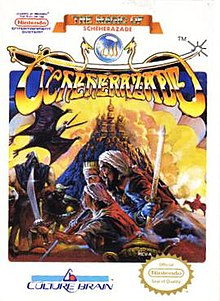
Dr. Mario is a 1990 puzzle video game developed and published by Nintendo for the Nintendo Entertainment System, Famicom, and Game Boy. It was produced by Gunpei Yokoi and designed by Takahiro Harada. The soundtrack was composed by Hirokazu Tanaka.

Donkey Kong Land is a 1995 platform game developed by Rare and published by Nintendo for the Game Boy. It condenses the side-scrolling gameplay of the Super Nintendo Entertainment System (SNES) game Donkey Kong Country (1994) for the handheld Game Boy with different level design and boss fights. The player controls the gorilla Donkey Kong and his nephew Diddy Kong as they defeat enemies and collect items across 30 levels to recover their stolen banana hoard from the crocodile King K. Rool.
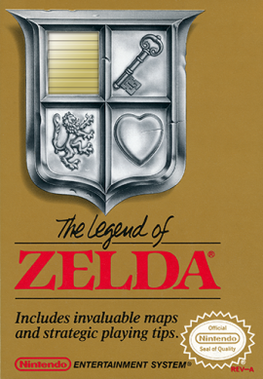
The Legend of Zelda, originally released in Japan as The Hyrule Fantasy: Zelda no Densetsu, is an action-adventure game developed and published by Nintendo. The first game of The Legend of Zelda series, it is set in the fantasy land of Hyrule and centers on an elf-like boy named Link, who aims to collect the eight fragments of the Triforce of Wisdom in order to rescue Princess Zelda from Ganon. The player controls Link from a top-down perspective and navigates throughout the overworld and dungeons, collecting weapons, defeating enemies and uncovering secrets along the way.
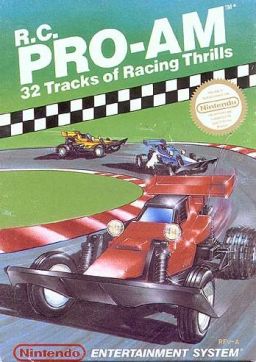
R.C. Pro-Am is a racing video game developed by Rare and published by Nintendo for the Nintendo Entertainment System. It was released in North America in February 1988, and then in Europe on April 15. Presented in an overhead isometric perspective, a single player races a radio-controlled car around a series of tracks in vehicular combat. Each track qualifies its top three racers for the next track. Collectible power-up items improve performance, hazards include rain puddles and oil slicks, and missiles and bombs can temporarily disable opponents. Originally titled Pro Am Racing, it was ported to the Sega Genesis in 1992 as Championship Pro-Am, an enhanced remake with enhanced graphics and additional features. R.C. Pro-Am spawned two sequels: Super R.C. Pro-Am in 1991, and R.C. Pro-Am II in 1992.
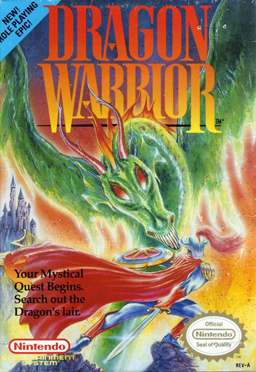
Dragon Quest, titled Dragon Warrior when initially localized to North America, is a role-playing video game developed by Chunsoft for the Nintendo Entertainment System. It was released by Enix in Japan in 1986 and by Nintendo in North America in 1989. It is the first game in the Dragon Quest video game series. Dragon Quest has been ported and remade for several video game platforms, including the MSX, MSX2, PC-9801, Super Famicom, Game Boy Color, Nintendo 3DS, PlayStation 4, mobile phones, and Nintendo Switch as of 2019. The player controls the hero character who is charged with saving the Kingdom of Alefgard and rescuing its princess from the evil Dragonlord. Dragon Warrior's story became the second part in a trilogy, with several spinoff anime and manga series.
1990 saw many sequels and prequels in video games, such as Metal Gear 2: Solid Snake, Dr. Mario, Dragon Quest IV, Final Fantasy III, Phantasy Star II, and Super Mario World, along with new titles such as Fire Emblem: Shadow Dragon and the Blade of Light and Magic Sword. The year's highest-grossing arcade video games were Final Fight in Japan and Teenage Mutant Ninja Turtles in the United States. The year's best‑selling system was the Game Boy, while the year's best-selling home video game was Super Mario Bros. 3 for the Nintendo Entertainment System.
1988 saw many sequels and prequels in video games, such as Dragon Quest III, Super Contra, Super Mario Bros. 2, Mega Man 2, Double Dragon II: The Revenge, and Super Mario Bros. 3, along with new titles such as Assault, Altered Beast, Capcom Bowling, Ninja Gaiden, RoboCop, Winning Run and Chase H.Q.
1986 saw many sequels and prequels in video games, such as Super Mario Bros. 2, along with new titles such as Arkanoid, Bubble Bobble, Castlevania, Dragon Quest, Ikari Warriors, The Legend of Zelda, Metroid, Out Run and R.B.I. Baseball. The year's highest-grossing arcade video games were Hang-On in Japan, Hang-On and Gauntlet in the United States, and Nemesis (Gradius) in London. The year's best‑selling home system was the Nintendo Entertainment System (Famicom) for the third year in a row, while the year's best-selling home video games in Western markets were Super Mario Bros. in the United States and Yie Ar Kung-Fu in the United Kingdom.

Wizards & Warriors, titled Densetsu no Kishi Elrond in Japan, is an action platform video game developed by Rare and published by Acclaim Entertainment for the Nintendo Entertainment System. It was released in North America in December 1987, and in Europe on January 7, 1990. The player controls Kuros, "Knight Warrior of the Books of Excalibur", as he sets out in the Kingdom of Elrond to defeat the evil wizard Malkil. Malkil holds the princess of Elrond captive in Castle IronSpire, deep within the forests of Elrond. The player fights through forests, tunnels, and caves, while collecting keys, treasure, weapons, and magic items.
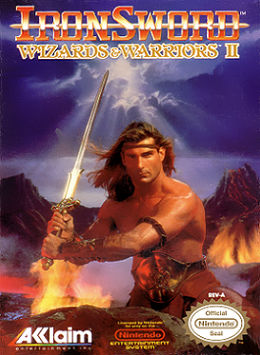
Ironsword: Wizards & Warriors II is a platforming action-adventure video game for the Nintendo Entertainment System (NES) developed by UK-based company Zippo Games, a subsidiary of Rare. The game was published by Acclaim and released in North America in December 1989 and in Europe on March 27, 1991. It is the sequel to Rare's 1987 title Wizards & Warriors. In Ironsword, the player controls the knight warrior Kuros as he ventures in the land of Sindarin. He must defeat the evil wizard Malkil, who has assumed the elemental forms of Earth, Wind, Fire, and Water. Kuros must collect the parts of and assemble the legendary "IronSword" in order to defeat Malkil, who resides at the top of IceFire Mountain.
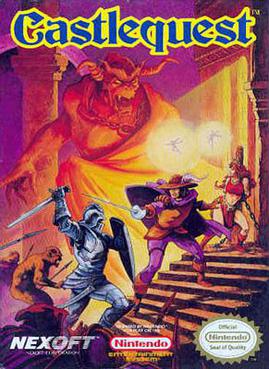
Castlequest is an adventure video game. It was developed and published by ASCII Corporation in 1985 for the FM-7, PC-88, and Sharp X1. Additional versions followed in 1986 for the Famicom and MSX, and was subsequently released in 1989 for the NES in the United States by Nexoft Corporation.

Ninja Gaiden III: The Ancient Ship of Doom is a side-scrolling platform video game developed and published by Tecmo. It was released in Japan on June 21, 1991 for the Famicom and in North America on August 15, 1991 for the Nintendo Entertainment System (NES). The NES version was not released in Europe. It was later ported to the Atari Lynx by Atari Corporation and released in 1993 in North America and Europe, the European version retaining the North American Ninja Gaiden III title. It was also re-released as part of its Ninja Gaiden Trilogy Super NES compilation in 1995 in Japan and North America. Long after, it was released for the Virtual Console service in North America on February 18, 2008 for the Wii and in North America and Europe on November 28, 2013 and January 23, 2014 respectively for the Nintendo 3DS. It was designed by Masato Kato, who took over for Hideo Yoshizawa—designer of the first two games in the NES series.

Mega Man X is an action-platform game developed and published by Capcom for the Super Nintendo Entertainment System. It was the first Mega Man game for the 16-bit console and the first game in the Mega Man X series, a spin-off to the original Mega Man series that began on the Super NES's predecessor, the Nintendo Entertainment System. Mega Man X was released in Japan on December 17, 1993 and was released in both North America and Europe the following year. Taking place a century after the original Mega Man series, Mega Man X is set in a futuristic world populated by both humans and "Reploids", robots capable of thinking, feeling, and growing like their human creators. Because of these complex attributes, many Reploids are prone to destructive, renegade activity and are thereafter referred to as "Mavericks". The plot of the game follows the protagonist X, an android member of a military task force called the "Maverick Hunters". With the help of his partner Zero, X must thwart the plans of Sigma, a powerful Maverick leader wishing to bring about human extinction.
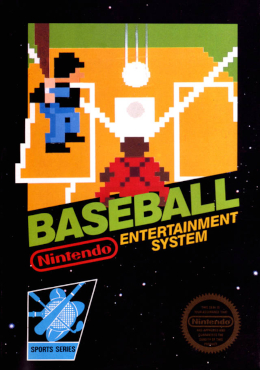
Baseball is a video game from Nintendo. It was released December 7, 1983, after the July 15 launch of the Famicom in Japan. In 1984, it was ported to the VS. System arcade as VS. Baseball with additional graphics and speech, becoming a number one hit in Japan and North America that year. It was localized as a Nintendo Entertainment System launch game in North America in 1985, and in Europe in 1986. IGN said the universal appeal of the American sport made Baseball a key to the NES's successful test market introduction, and an important piece of Nintendo history. The game was also competing with Sega's arcade hit Champion Baseball, released earlier in 1983.

Mega Man: Dr. Wily's Revenge, also known as Mega Man in Dr. Wily's Revenge or in Japan as Rockman World is an action-platform video game by Capcom for the Nintendo Game Boy. It is the first game in the handheld series of the Mega Man franchise. It was released in Japan on July 26, 1991, and was localized in North America that December and in Europe the following year. The game continues the adventures of the android hero Mega Man as he once again confronts the evil Dr. Wily, who has dispatched his revived "Robot Masters" and a new "Mega Man Killer" named Enker.

Shadowrun is a cyberpunk-fantasy action role-playing video game for the Super Nintendo Entertainment System, adapted from the tabletop role-playing game Shadowrun by FASA. The video game was developed by Australian company Beam Software and first released in 1993 by Data East.
Culture Brain Inc. is a Japanese video game developer and publisher founded on October 5, 1980. In 2016, it was renamed Culture Brain Excel.
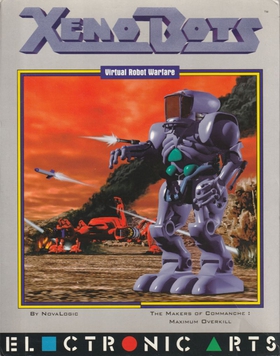
Ultrabots is a first-person shooter video game developed by NovaLogic for MS-DOS and published by Electronic Arts in 1993. The player controls a group of giant robots and battles other giant robots.
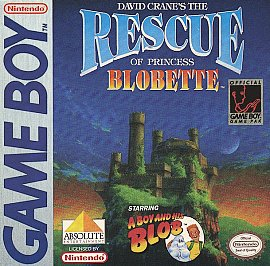
The Rescue of Princess Blobette is a video game for the Game Boy and the sequel to the Nintendo Entertainment System (NES) game A Boy and His Blob: Trouble on Blobolonia. It was published in North America by Imagineering's parent company Absolute Entertainment and in Japan by Jaleco. It was published by Nintendo in Europe.

Final Fantasy is a fantasy role-playing video game developed and published by Square in 1987. It is the first game in Square's Final Fantasy series, created by Hironobu Sakaguchi. Originally released for the NES, Final Fantasy was remade for several video game consoles and is frequently packaged with Final Fantasy II in video game collections. The first Final Fantasy story follows four youths called the Warriors of Light, who each carry one of their world's four elemental crystals which have been darkened by the four Elemental Fiends. Together, they quest to defeat these evil forces, restore light to the crystals, and save their world.
